A comic strip is a sequence of cartoons, arranged in interrelated panels to display brief humor or form a narrative, often serialized, with text in balloons and captions. Traditionally, throughout the 20th and into the 21st century, these have been published in newspapers and magazines, with daily horizontal strips printed in black-and-white in newspapers, while Sunday papers offered longer sequences in special color comics sections. With the advent of the internet, online comic strips began to appear as webcomics.

Sergio Aragonés Domenech is a Spanish/Mexican cartoonist and writer best known for his contributions to Mad magazine and creating the comic book Groo the Wanderer.

The Wizard of Id is a daily newspaper comic strip created by American cartoonists Brant Parker and Johnny Hart. Beginning November 16, 1964, the strip follows the antics of a large cast of characters in a shabby medieval kingdom called "Id". The title is a play on The Wizard of Oz, combined with the Freudian psychological term id, which represents the instinctive and primal part of the human psyche.

Mark Stephen Evanier is an American comic book and television writer, known for his work on the animated TV series Garfield and Friends and on the comic book Groo the Wanderer. He is also known for his columns and blog News from ME, and for his work as a historian and biographer of the comics industry, such as his award-winning Jack Kirby biography, Kirby: King of Comics.
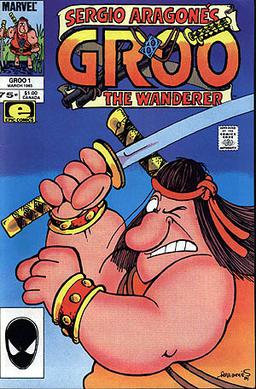
Groo the Wanderer is a fantasy/comedy comic book character created by Sergio Aragonés. His stories are written and drawn by Aragonés, dialogued and edited by Mark Evanier, lettered by Stan Sakai and colored by Tom Luth. Over the years, Groo has been published by Pacific Comics, Eclipse Comics, Marvel Comics, Image Comics and Dark Horse Comics.
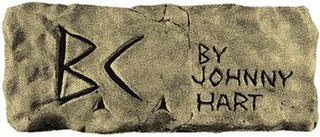
B.C. is a daily American comic strip created by cartoonist Johnny Hart. Set in prehistoric times, it features a group of cavemen and anthropomorphic animals from various geologic eras.
Frank W. Bolle was an American comic-strip artist, comic book artist and illustrator, best known as the longtime artist of the newspaper strips Winnie Winkle and The Heart of Juliet Jones; for stints on the comic books Tim Holt and Doctor Solar, Man of the Atom; and as an illustrator for the Boy Scouts of America magazine Boys' Life for 18 years. With an unknown writer, he co-created the masked, Old West comic-book heroine the Black Phantom. Bolle sometimes used the pen name FWB and, at least once, F. L. Blake.

Wash Tubbs is an American daily comic strip created by Roy Crane that ran from April 14, 1924 to 1949, when it merged into Crane's related Sunday page, Captain Easy. Crane left both strips in 1943 to begin Buz Sawyer, but a series of assistants, beginning with Leslie Turner, kept the combined Captain Easy daily and Sunday strips going until October 1, 1988.
A daily strip is a newspaper comic strip format, appearing on weekdays, Monday through Saturday, as contrasted with a Sunday strip, which typically only appears on Sundays. They typically are smaller, 3-4 grids compared to the full page Sunday strip and are black and white.
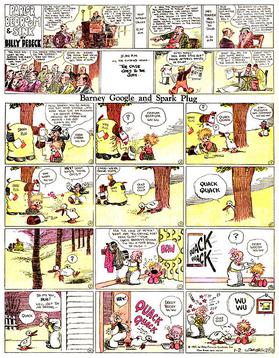
The Sunday comics or Sunday strip is the comic strip section carried in most western newspapers. Compared to weekday comics, Sunday comics tend to be full pages and are in color. Many newspaper readers called this section the Sunday funnies, the funny papers or simply the funnies.

Grin and Bear It is a former daily comic panel created by George Lichtenstein under the pen name George Lichty. Lichty created Grin and Bear it in 1932 and it ran 83 years until 2015, making it the 10th-longest-running comic strip in American history. Frequent subjects included computers, excessive capitalism and Soviet bureaucracy. Situations in his cartoons often took place in the offices of commissars, or the showrooms of "Belchfire" dealers with enormous cars in the background. His series "Is Party Line, Comrade!" skewered Soviet bureaucrats, always wearing a five-pointed star medal with the label "Hero".
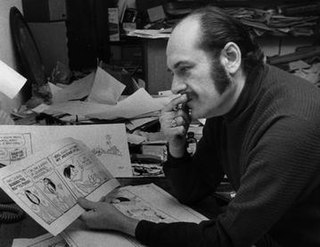
Howard Post was an American animator, cartoonist, and comic strip and comic book writer-artist.
A comic strip syndicate functions as an agent for cartoonists and comic strip creators, placing the cartoons and strips in as many newspapers as possible on behalf of the artist. A syndicate can annually receive thousands of submissions, from which only two or three might be selected for representation. In some cases, the work will be owned by the syndicate as opposed to the creator. The Guinness World Record for the world's most syndicated strip belongs to Jim Davis' Garfield, which at that point (2002) appeared in 2,570 newspapers, with 263 million readers worldwide.

Freckles and his Friends is an American comic strip set in the peaceful small town of Shadyside where young Freckles McGoosey and his friends lived. Although the long-running strip, created by Merrill Blosser, is remembered for its continuing storyline involving a group of teenagers, it originally featured a child at the age of six or seven in gag-a-day situations.
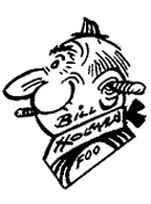
Bill Holman was an American cartoonist who drew the classic comic strip Smokey Stover from 1935 until he retired in 1973. Distributed through the Chicago Tribune syndicate, it had the longest run of any strip in the screwball genre. Holman signed some strips with the pseudonym Scat H. He once described himself as "always inclined to humor and acting silly."
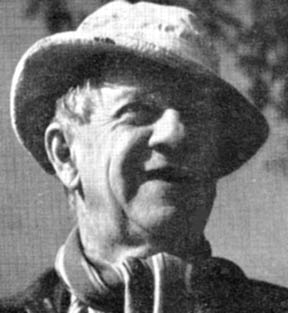
Clare Victor Dwiggins was an American cartoonist who signed his work Dwig. Dwiggins created a number of comic strips and single-panel cartoons for various American newspapers and newspaper syndicates from 1897 until 1945, including his best-known strip, the long-running School Days.
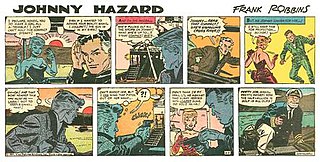
Johnny Hazard is an action-adventure comic strip created by cartoonist Frank Robbins for King Features Syndicate. It was published from June 5, 1944, until August 20, 1977, with separate storylines for the daily strip and the Sunday strip.
Allan Holtz is an American comic strip historian who researches and writes about newspaper comics for his Stripper's Guide blog, launched in 2005. His research encompasses some 7,000 American comic strips and newspaper panels. In addition to his contributions to Hogan's Alley and other publications about vintage comic strips, he is the author of American Newspaper Comics: An Encyclopedic Reference Guide (2012). He is a resident of Tavares, Florida.
The Field Newspaper Syndicate was a syndication service based in Chicago that operated independently from 1941 to 1984, for a good time under the name the Chicago Sun-Times Syndicate. The service was founded by Marshall Field III and was part of Field Enterprises. The syndicate was most well known for Steve Canyon, but also launched such popular, long-running strips as The Berrys, From 9 To 5, Rivets, and Rick O'Shay. Other features included the editorial cartoons of Bill Mauldin and Jacob Burck, and the "Ask Ann Landers" advice column.
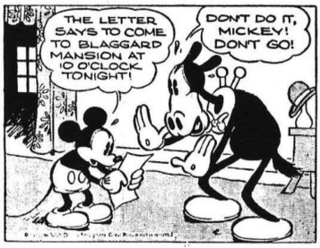
Mickey Mouse is an American newspaper comic strip by the Walt Disney Company featuring Mickey Mouse, and is the first published example of Disney comics. The strip debuted on January 13, 1930, and ran until July 29, 1995. It was syndicated by King Features Syndicate.














